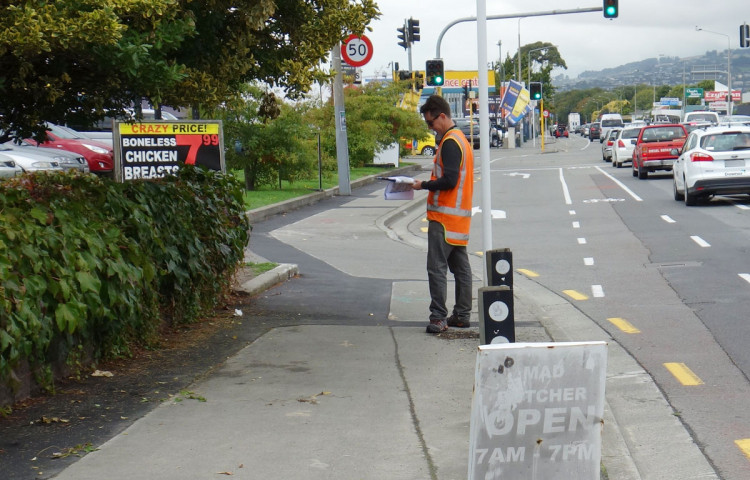A Safe System audit is an independent review that assesses the safety risks associated with transport improvement and renewal projects. The objective of a Safe System audit is to help ensure a project achieves an outcome that is consistent with the Safe System approach and supports the Vision Zero journey of a safe transport system where it is safe to drive, cycle or walk.
Safe System audits are undertaken at key stages of a project’s development and implementation stages:
The Safe System audit guidelines (Waka Kotahi 2022) provides guidance for undertaking Safe System audits for transport projects in New Zealand[1]. These guidelines update and replace the Road safety audit procedures for projects released by Waka Kotahi in 2013.
The Safe System audit guidance brings together key elements of both the Safe System assessment framework and road safety audit procedures to provide a comprehensive transport project audit that assesses both the Safe System alignment, and the risk ranking of road safety concerns at different stages of the project in the development cycle.
Safe System audit guidelines for transport projects
Further guidance on Safe System Audit guidelines
Virtual training courses are available for both Safe System assessments and Road safety audits. Waka Kotahi will provide financial support to internal staff and local government staff.

Undertaking a safety audit on a footpath. (Photo: Axel Wilke)
Traditional road safety audits have frequently overlooked walking issues. The Safe System audit requires consideration of pedestrian crash risk as one of the seven assessment categories so safety issues for pedestrians are now less likely to be overlooked. Austroads Guide to Road Safety Part 6A (Austroads, 2019a)[2] also contains useful advice on how to identify risks and hazards for pedestrians, particularly section 8.4. Including a specialist in pedestrian planning and design on the audit team is another way to achieve better coverage of these issues.
A Safe System Assessment (SSA) Framework is a procedure developed by Austroads in 2016 to help road agencies methodically consider Safe System objectives in road infrastructure projects[3].
SSA will only need to be conducted at one stage of project development but utilised as development and design proceeds. However, if there are subsequent changes to the design scope that are likely to impact on Safe System alignment, the SSA should be reviewed and repeated as necessary. SSA are now incorporated into the Safe System audit procedures to maximise road safety outcomes.
The SSA process evaluates seven types of crash risk, and considers the exposure, likelihood and severity of each crash type on a 0 to 4 scale for each attribute. A site/proposal with a completely safe system would result in an SSA score of zero, while one with the worst ratings across all crash attributes would score 448. These numbers do not directly relate to any particular crash metric; rather they simply provide a way to determine relative changes in safety at or between sites.
SSA is still a relatively new process in New Zealand. As such, there is limited experience and use of the process by practitioners to date, or much by way of systematic comparison of ratings derived by different practitioners. Still, with those caveats in mind, it does provide a useful way to consider existing safety deficiencies at a site and the possible ways to improve these. The fact that pedestrian crashes are specifically identified as one of the seven assessment categories (as are cycle crashes) ensures that pedestrian safety is not ignored in the evaluation process.
Level Crossing Safety Impact Assessments (LCSIA) are a relatively new process developed by KiwiRail to assess the level of crash risk of existing and new/upgraded railway level crossings (for road and/or path users). All new or upgraded pedestrian level crossings must have an LCSIA undertaken to satisfy KiwiRail’s requirements for approving the crossing[4] .
PNG: Design of rail crossings for walking
An LCSIA involves assessing the relative safety risk of the existing crossing (if present) and identifying what crossing features would be required to reduce that risk to an acceptable level. In the case of a pedestrian crossing, that could include approach constrictions, automated gates, or full grade separation. An accredited LCSIA assessor should be engaged to undertake this work.
Level Crossing Risk Assessment Guidance(external link)
Safety in Design (SiD) is a process that helps designers to put safety at the centre of their projects. The aim is to produce designs that minimise the opportunity for safety hazards during the construction, operation and maintenance of the proposed facilities. This results in reduced likelihood of safety issues for staff associated with building and maintaining the facility and for the general public using it. A number of industry organisations, including Auckland Transport[5] have introduced SiD considerations into their design processes, and training courses in SiD are available.
Some examples of SiD considerations for pedestrian facilities include:
[1] Waka Kotahi NZ Transport Agency. (2022) Safe System audit guidelines for transport projects
[2] Austroads. (2019a). Guide to Road Safety Part 6A: Implementing Road Safety Audits, Publication No. AGRS06A-19, Feb 2019
[3] Turner, B., Jurewicz, C.., Pratt, K., Corben, B., Woolley, J. (2016). Safe System Assessment Framework(external link). Austroads Publication No. AP-R509-16, Feb 2016. Austroads Research Report AP-R509-16
[4] KiwiRail and Waka Kotahi NZ Transport Agency. (2021). Level Crossing Risk Assessment Guidance(external link)
[5] Auckland Transport. (2016). Standard HS08 Safety in Design(external link)